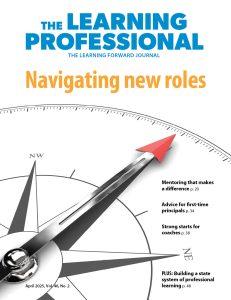Implementation
When implementing a new initiative to help teachers, what really makes a new technology or resource stick? Learning Forward’s recent report, Beyond Barriers: Encouraging Teacher Use of Feedback Resources, looks […]
Every week, it seems, there are enticing new technology tools developed for educators, schools, and school systems. What is it that leads teachers to use such resources? Learning Forward recently […]
What can educators learn from Star Wars? You do not have to inhabit a galaxy far, far away to learn lessons about effective professional learning. In fact, the most effective professional learning occurs within your own educational sphere, so here are six lessons to transform learning in your own universe.
No matter our focus—whether tech integration or student success or cultural competency, the research of Shirley Hord and Michael Fullan tells us that the same remodeling steps will support our change in education. See if these steps are part of your district or campus-remodeling plan.
Time after time, conversations with decision makers in successful organizations reveal the high value they place on the relationships they try to build among people. The focus on relationships is not to be taken lightly. Toxic relationships diminish capacity (Lewin and Regine, The Soul at Work, 1999). With multiple, increasingly complex initiatives, leaders in successful organizations generate their best work and results from the interactions they have with the people who work there. To create new solutions for challenging problems, they have to have these relationships to enlist the ability and creativity of the people in their schools.
Followers of the Learning Forward blog know that we changed our name several years ago from the National Staff Development Council to Learning Forward. Later this year, we’ll reach the five-year anniversary of the new name. As I reflect on those years, I think about some of the learning I’ve seen in schools and districts that leads me to ask, “Are you learning forward or backward?”
- « Previous
- 1
- 2
- 3
- Next »







